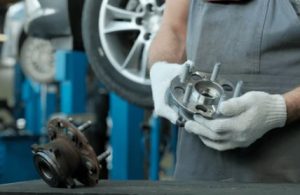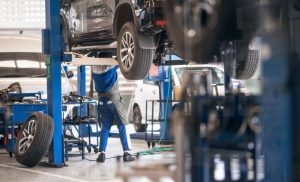When it comes to vehicle maintenance, most drivers focus on engine oil, brake pads, and tires — but often overlook one of the most critical yet subtle aspects of safe driving: wheel hub alignment. Proper alignment not only ensures smooth handling and even tire wear but also has a profound impact on bearing longevity and overall vehicle stability.
In this article, we’ll explore how wheel hub alignment affects bearings, what happens when it’s neglected, and what you can do to keep your suspension system working efficiently.
Understanding the Role of the Wheel Hub and Bearings

The wheel hub serves as the central mounting point for your vehicle’s wheel, connecting it securely to the suspension system. Within the hub assembly, wheel bearings allow the wheel to rotate smoothly with minimal friction.
These components are engineered to endure high rotational speeds and heavy loads. However, when alignment is off — even slightly — it introduces uneven forces that lead to premature wear and potential failure.
| Component | Function | Common Issues When Misaligned |
|---|---|---|
| Wheel Hub | Supports wheel attachment and transfers load to suspension | Warping, uneven load distribution |
| Bearings | Enable smooth wheel rotation with minimal friction | Overheating, pitting, or seizure |
| Knuckle / Control Arm | Maintains wheel position relative to body | Bent arms cause misalignment |
| Axle Shaft | Transfers power to wheels | Vibrations or uneven torque |
The Connection Between Alignment and Bearing Life
Wheel hub alignment determines the angle at which the wheel and bearing operate. Bearings are designed to handle loads applied evenly along specific axes. Misalignment disturbs that equilibrium, leading to increased friction, heat buildup, and eventual failure.
Key effects of poor wheel hub alignment on bearings include:
-
Uneven Load Distribution – Misalignment shifts the load away from the bearing’s center, causing localized pressure and surface wear.
-
Increased Friction and Heat – Off-angle rotation generates more friction, leading to thermal expansion and lubricant breakdown.
-
Vibration and Noise – Bearing wear from misalignment creates rumbling or humming noises, especially at higher speeds.
-
Shortened Lifespan – Even a few degrees of angular misalignment can reduce bearing life by up to 50%.
-
Reduced Fuel Efficiency – Excess friction and drag increase rolling resistance, forcing the engine to work harder.
Signs of Wheel Hub Misalignment
Detecting wheel hub misalignment early can save you from costly repairs. Look for the following warning signs:
-
Uneven or rapid tire wear
-
Steering pulling to one side
-
Vibrations felt through the steering wheel
-
Audible humming or grinding from wheels
-
Decreased cornering stability
-
ABS or traction control warning lights
Tip: If you notice any of these symptoms after hitting a pothole, curb, or undergoing suspension repairs, get your alignment checked immediately.
How Wheel Alignment Impacts Vehicle Stability
Beyond bearing life, misalignment affects vehicle stability and handling. The suspension system is designed for precise geometry — any deviation affects how forces are distributed during cornering, braking, or acceleration.
| Alignment Parameter | Description | Effect of Incorrect Setting |
|---|---|---|
| Camber | Tilt of the wheel relative to vertical axis | Uneven tire wear and reduced corner grip |
| Toe | Angle of wheels pointing inward or outward | Poor straight-line stability and rolling resistance |
| Caster | Steering axis tilt affecting directional control | Reduced return-to-center steering and wandering |
Maintaining proper alignment ensures that all four tires maintain optimal contact with the road, enhancing traction, braking, and cornering balance.
Preventive Maintenance: Keeping Bearings and Hubs Healthy
Proper maintenance can drastically extend bearing life and prevent stability issues. Follow these key tips:
1. Regular Alignment Checks
Schedule wheel alignment every 20,000–30,000 km, or whenever you notice handling changes. This ensures even pressure on all bearings.
2. Inspect Suspension Components
Worn control arms, bushings, or ball joints can alter alignment. Replace them promptly to prevent cascading wear on hubs and bearings.
3. Maintain Correct Tire Pressure
Unequal tire pressure affects wheel balance and puts extra stress on bearings. Check pressures monthly.
4. Avoid Overloading
Excess weight increases vertical load on wheel hubs, accelerating bearing wear. Stick to manufacturer load limits.
5. Use Quality Parts
When replacing hubs or bearings, always use OEM-quality components. Low-grade materials can deform under stress, causing premature failure.
To ensure durability and precision fitment, you can Buy Wheel Hub & Bearings online from trusted manufacturers for your specific vehicle model.
Common Causes of Bearing Failure Related to Misalignment
| Cause | Effect on Bearings | Prevention |
|---|---|---|
| Improper installation | Stress and preload imbalance | Use torque wrench and follow specifications |
| Damaged hub face | Irregular load distribution | Inspect hub surfaces before fitting bearings |
| Bent axle or spindle | Causes runout and vibration | Replace damaged components promptly |
| Contaminated lubricant | Reduces protection and increases wear | Use clean, sealed bearings |
| Lack of alignment maintenance | Persistent off-angle load | Realign after any suspension work |
Professional vs. DIY Alignment: What’s Best?
While DIY alignment kits exist, professional alignment offers unmatched precision. Modern workshops use laser or camera-based alignment systems that detect even the slightest deviation.
However, if you prefer DIY checks, ensure:
-
The vehicle is on a level surface.
-
Tire pressures are equal.
-
You use a quality camber gauge and toe plates.
-
You re-torque suspension bolts after adjustment.
For long-term accuracy and bearing safety, professional calibration remains the better choice.
When to Replace Wheel Bearings

Even with proper alignment, bearings eventually wear out. Here’s a general guide:
| Component | Average Lifespan | Replacement Indicator |
|---|---|---|
| Wheel Bearings | 100,000–150,000 km | Grinding noise, vibration, play in wheel |
| Wheel Hub Assembly | 120,000–180,000 km | Wobbling or steering instability |
| Seals and Fasteners | During every hub replacement | Visible damage or leaks |
If ignored, worn bearings can lead to hub overheating, ABS failure, and even wheel detachment in extreme cases — making timely replacement critical.
Final Thoughts
Wheel hub alignment isn’t just about tire wear or handling precision — it directly influences the lifespan of your bearings and the stability of your vehicle. Misalignment causes extra friction, heat, and stress that can shorten bearing life by thousands of kilometers.
By keeping your suspension geometry in check, performing regular inspections, and using high-quality parts, you can maintain smooth performance, fuel efficiency, and safety.
When it’s time to replace worn components or upgrade your setup, make sure to Buy Wheel Hub & Bearings online for reliable, long-lasting performance and perfect fitment.